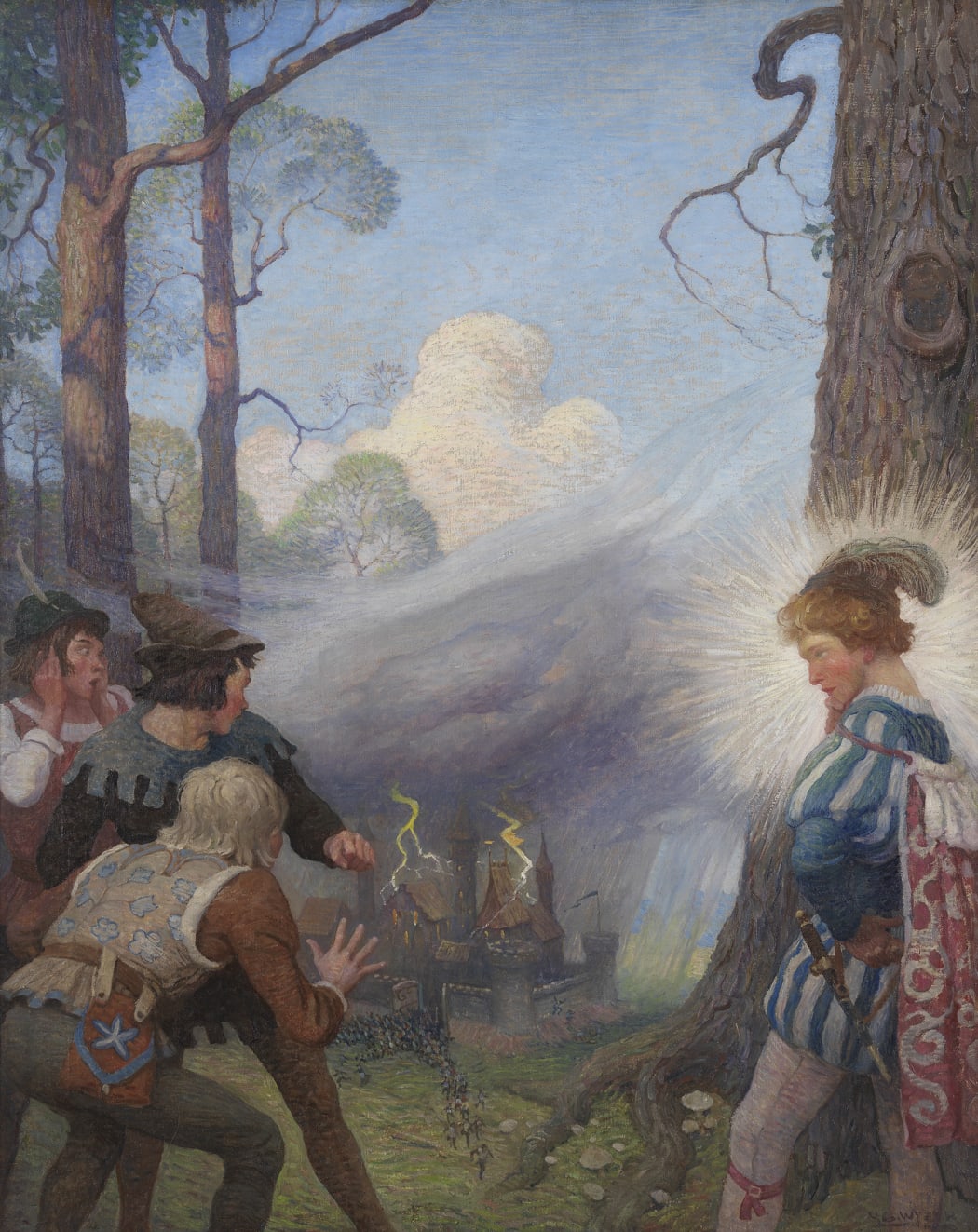
In 1897, over a decade after The Adventures of Huckleberry Finn and twenty years after The Adventures of Tom Sawyer, Mark Twain set to work on a biting satire centered around the adventures of a puckish young magician known by the moniker “No. 44,” among other names. Twain seems not to have ever finished the book, but did make three or more fragmented versions which were cobbled together by his estate into a whole narrative. The first of the three drafts is set in the town of St. Petersburg, Missouri, a fictionalization of Twain’s own Hannibal, Missouri. A later draft, also set in St. Petersburg, features Tom Sawyer and Huck Finn as No. 44’s childhood accomplices. In two other versions, the action is set in late 15th century Austria, Tom and Huck replaced by local Austrian children.
And notably, in these drafts, the titular Mysterious No. 44 is given the name Satan.
The character reveals himself to be not the fallen angel himself, but a young nephew of the Prince of Darkness. Young Satan inherited the name from his famous uncle along with certain magical powers, but tries to distance himself from the family business. He leads his young chums on fantastical adventures, often deploying the same sort of mischievous deceptions that Tom Sawyer deployed.
The story that was ultimately published was an admixture of these three drafts, set in Austria shortly after the invention of the printing press, but in many ways the narrative itself is a blend of many of Twain’s favorite themes. The historical setting is a device borrowed from A Connecticut Yankee in King Arthur’s Court; the good-natured romping of boyhood runs through Huck Finn; and, in the final draft, The Mysterious Stranger is a reprise of Tom Sawyer’s folksy “be careful what you wish for” morality.
Twain clearly struggled with the particulars of his story, but he took delight in pricking the sensitivities of his readership. While the young magician is essentially a Tom Sawyer stand-in, Twain in his late years was happy to just name his protagonist after Satan himself. Thus he positioned his story in the tradition of the another great satirist and fabulist, Jonathan Swift. Swift’s Modest Proposal is perhaps the gold standard of black-humored satire, and Twain may have been directly influenced by Swift’s even more biting An Argument Against Abolishing Christianity. Twain’s story of the adventures of young Satan was intended—perhaps never to the author’s satisfaction—to pillory superstition and prejudice with just the same irreverent humor as Swift’s polemical pamphlets.
In any event, when Twain died in 1910, the work was not finished. A final version was cobbled together and published in Harper’s Magazine in 1916, and Harper’s joined America’s favorite writer with America’s favorite illustrator, tasking a young N. C. Wyeth with the commission. Wyeth came from a good God-fearing family, but the subject matter was entirely up his alley. Much of Wyeth’s illustration work was devoted to adventure stories and fabulous imagery just like Jonathan Swift’s Gulliver’s Travels: voyages of discovery, fantastical people and places, stories of trickery and serpentine morality. Wyeth never illustrated Gulliver’s Travels, but he considered other scenes of diabolical intrigue, from giants in the clouds to Wotan’s Fire Spell from Wagner’s Ring of the Niebelungen. In short, it was a perfect marriage of subject matter and artist, and the painter rose to the occasion.
One illustration from the book is on view through October 25th, along with a dozen other paintings by the master illustrator, at Menconi + Schoelkopf. The painting, following the convention of illustrational painting, is titled with the caption from the page it illustrates:
The Lightning Blazed Out Flash Upon Flash.
As in Goethe’s Faust, our young heroes are offered god-like powers over life and death as an instrument of their play. They make a toy castle, with miniature men and horses to play at war; Young Satan brings the Liliputians to life, and shortly thereafter, brings on a miniature thunderstorm to terrorize the tiny scene. The destruction is a macabre display in miniature, as mini-man and mini-beast are destroyed before the boys’ eyes. “Our hearts were broken; we could not keep from crying.” But Satan consoles them: “Oh, it is no matter; we can make plenty more.”
The Nephew of the Prince of Darkness is right, and this is just the beginning of his mischief. But the boys are repulsed by the scene, and begin their own education about the awful responsibility of creation and destruction. There’s a moral baked into the scene, both about the responsibilities of power and the responsibilities of fantasy. The boys had fantasies about war, but seeing it come to life, even in the consequence-less world of Satan’s playthings, sickened them to their cores. Twain’s entire career was built on the awful consequences of blending fantasy and reality in his stories—perhaps viewing himself as kinship with the young magician. N. C. Wyeth, picture-maker and master fantasist, contemplated these grave responsibilities as well. While illustrations such as these were ignored by the fine art world for a generation, Wyeth knew instinctively that there is no such thing as a “mere” fantasy.
Fantasies, Wyeth understood, have consequences.

